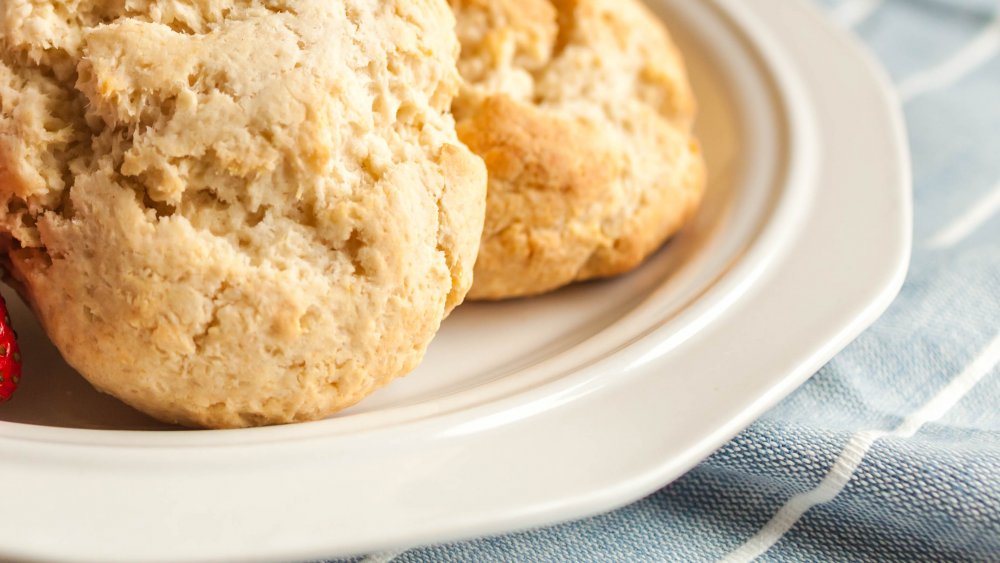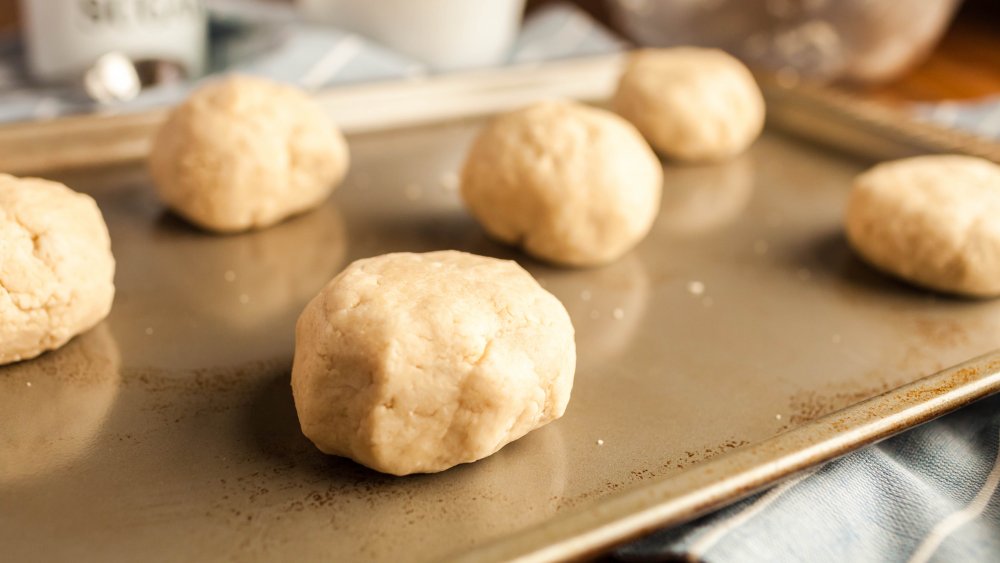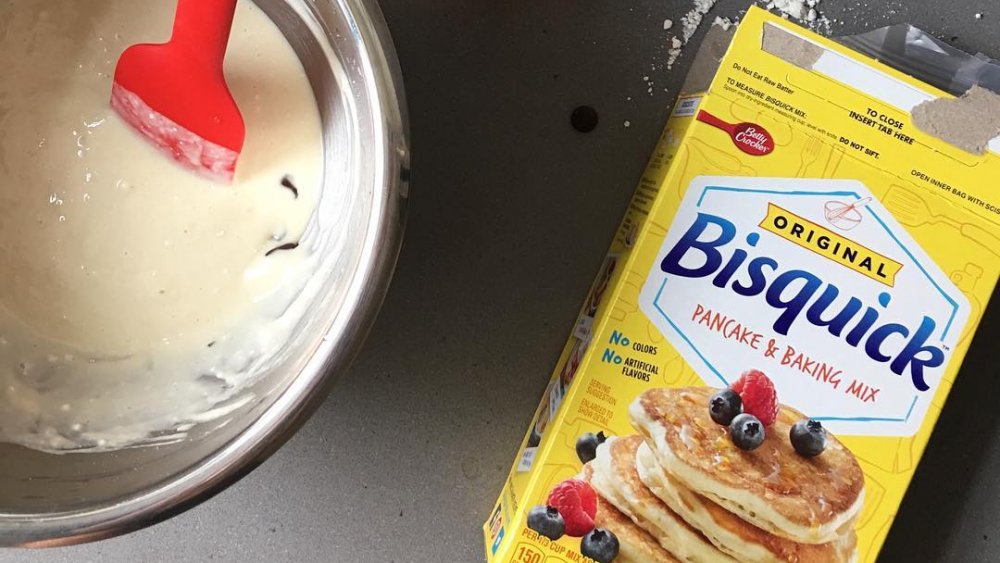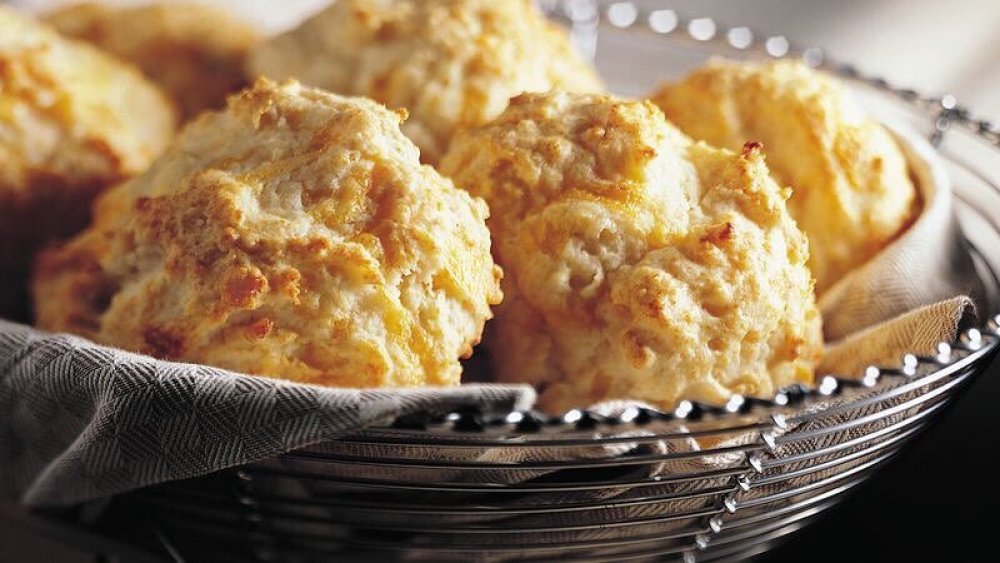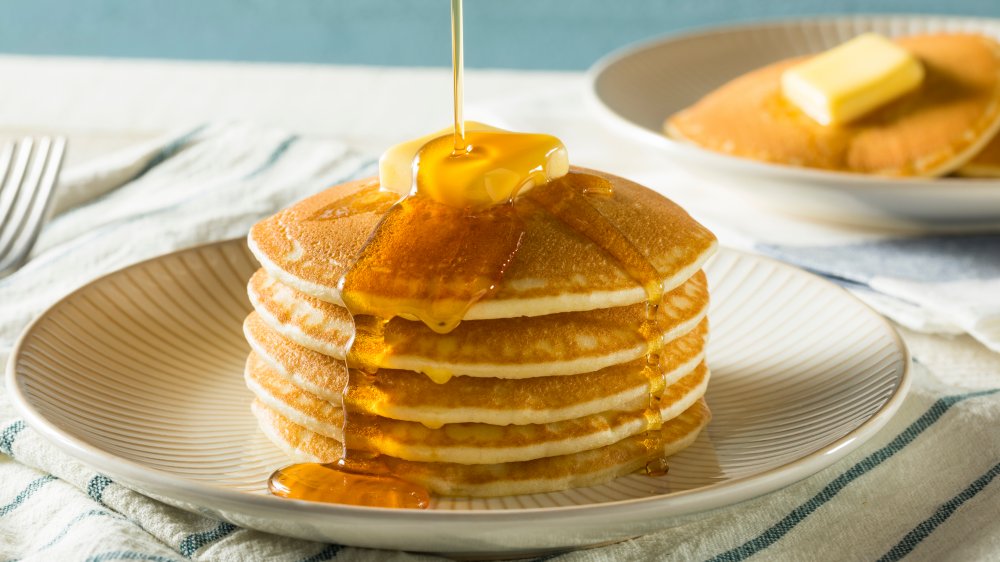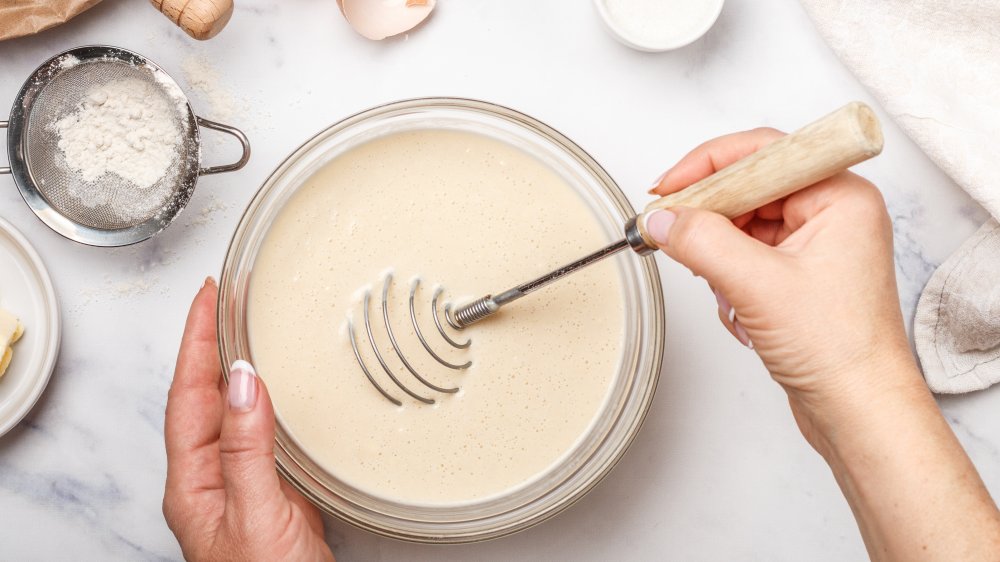The Untold Truth Of Bisquick
Bisquick can be a lifesaver when you want pancakes or biscuits but don't feel like doing the whole "from-scratch" thing. It cuts out the middleman (basic ingredients), allowing for homemade treats to be prepared with much less effort and time. Its promise of easy baked goods with no kneading or rolling required is something that many home cooks can get behind. Anyone can add a couple eggs and some milk and simply stir, right?
While you've likely reached for that iconic box time and time again, it's also likely that you haven't given Bisquick itself too much thought. From its origin to what's really inside the box, there are some things you might not know about this baking mix that's been around nearly 100 years.
Here's how Bisquick was invented
Carl Smith created the recipe for Bisquick in 1930. He was a sales executive at General Mills, and enjoyed some delicious biscuits on a train ride to San Francisco. He asked the cook how he made them, and was shown a pre-mixed blend of flour, salt, baking powder, and lard kept on ice (via Mental Floss). From there, the wheels started turning for Smith, and a revolutionary baking product was on the horizon.
Smith quickly pitched the idea of the mix to General Mills executives who decided to create a version that didn't need to be refrigerated. The head chemist, Charlie Kress, led the efforts of creating Bisquick, which became available on store shelves in 1931. It was so popular that other companies began creating their own versions, though Bisquick continued to be a best seller, with higher sales than any of the knock-off versions.
The evolution of marketing Bisquick
While the origin story is common knowledge (at least to those who know about the origins of Bisquick), it is rarely acknowledged that the chef on the train — who was never identified or given credit for inspiring Bisquick — was Black (via Taste). This lack of recognition is not the only problematic issue with race in the history of Bisquick. In 1933, Bisquick published Betty Crocker's 101 Delicious Bisquick Creations, which had no images of Black people. Then, in 1935, How To Take a Trick a Day With Bisquick was published, featuring Black people only as servants.
In 1935, Bisquick began a partnership with child star Shirley Temple. They wanted to encourage children to drink more milk. To do this, they gave away a free children's mug with a photograph of Temple on it with every purchase of a large box of Bisquick. Of course, you need milk to add to your Bisquick to make biscuits.
In the 1940s, Bisquick became a cheap convenience food. The company began using the slogan, "a world of baking in a box," to demonstrate that the mix could be used for more than just baking biscuits. Bisquick also began printing recipes for other baked goods on the boxes, such as dumplings, muffins, and coffee cake.
Bisquick further simplifies baking
The Bisquick available today is not the same one sold early on. In the late 1960s, General Mills decided to change the recipe. They wanted to make biscuits lighter and fluffier in texture. To do this, they added buttermilk and more shortening, and then began selling the product as New Bisquick. It was popular and eventually replaced the original version, then reverted to its original name.
Then, in the 1970s and '80s, Bisquick turned its focus to recipes. Betty Crocker's Bisquick Cookbook, published in 1971, provided over 200 recipes that used Bisquick. By 1980, there was a fan club called the Bisquick Recipe Club, which sent cookbooks and a newsletter, "The Bisquick Banner," to fans.
Bisquick would further simplified the baking process with a product called Bisquick Shake 'n Pour. Now bakers merely had to add water to the container, and as the name says, shake it and pour it. This version of Bisquick eliminated the need to add eggs or milk, or even to measure anything.
Bisquick pancakes aren't actually cheaper than homemade
Sorry cost-conscious bakers, but HuffPost did the math for using Bisquick versus making pancakes from scratch, and if you're buying Bisquick simply because you think it's the cheaper way to go, you'll be disappointed in the publication's findings. They found that it actually costs 2 cents less per serving if you make your pancakes from scratch. However, this obviously means that you have a fully stocked pantry, not the mention the time and desire to save 2 cents for breakfast. When you think about it like that, Bisquick might come out on top, after all. Time is money, right?
In the end, it really comes down to cost versus convenience, not to mention that some people just prefer the taste of Bisquick pancakes.
There are healthier Bisquick options available
Bisquick may make baking quicker, but it isn't necessarily healthier. Bisquick contains partially hydrogenated soybean and cottonseed oil, otherwise known as trans fat. This can have negative health effects such as raising the LDL cholesterol (the bad kind), and lowering HDL cholesterol (the good kind). Too much trans fat also increases the risk of cardiovascular disease and stroke (via Medline Plus). To prevent Bisquick from losing sales when trans fat became a buzz word of the worst kind, the company introduced Bisquick Heart Smart Pancake and Baking Mix. This version of Bisquick contains no trans fats.
The company has also paid attention to the gluten-free trend, introducing a gluten-free pancake and baking mix containing rice flour and modified potato starch.
